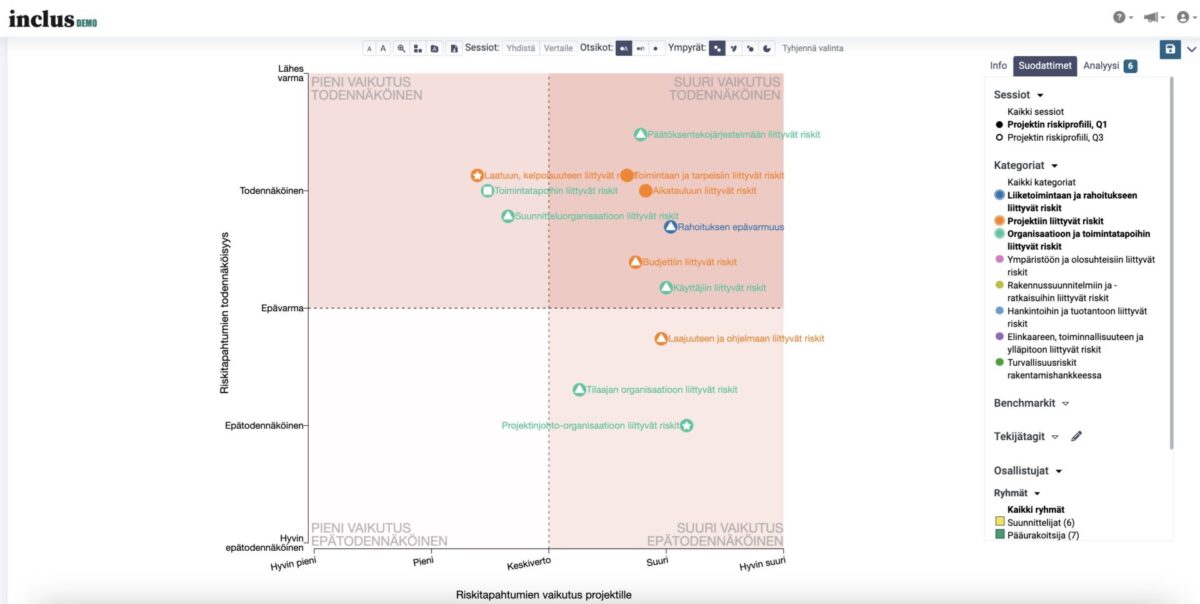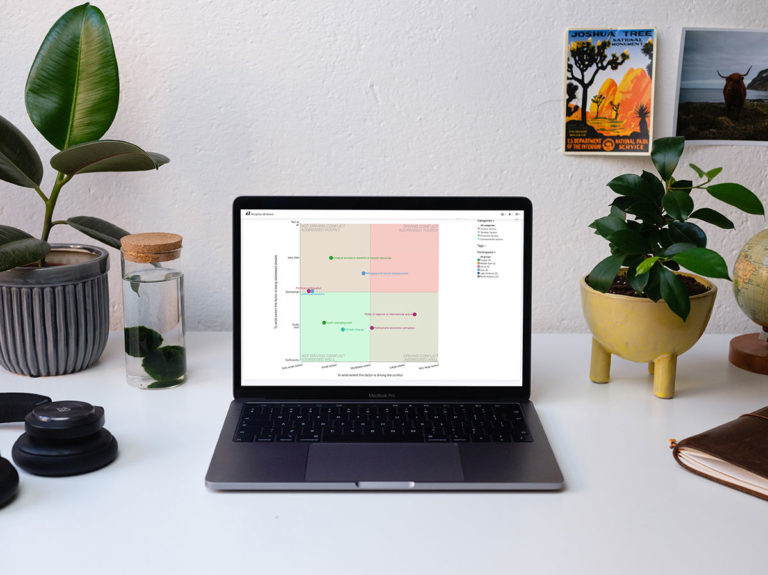The more complex the project, the more closely its success is linked to the commitment and mutual communication between people. There are multidimensional risks in large-scale projects, but also opportunities. Identifying these together opens up opportunities to develop not only project management, but also the culture of the entire organization in a sustainable direction.
Complexity of projects challenges risk management
Risk management plays a key role especially in large, long-lasting or otherwise complex projects. Such projects, characterized by their high failure risk and significant financial stakes, demand a collaborative risk management strategy. This inclusive approach harnesses the diverse expertise and viewpoints of all stakeholders involved.
Engaging in a collective dialogue enables a comprehensive visibility of the risks inherent in complex projects. It is through this unity of perspectives that risks can be collectively identified, evaluated, and strategically managed. This synergy not only mitigates potential threats but also reinforces a culture of cooperation, essential for the coordinated oversight and successful delivery of the project.
What is a 'complex project'?
Complex and challenging projects are carried out in numerous industries and sub-areas of society. Construction, industrial investments and geotechnical planning require multidisciplinary cooperation, precise planning and continuous risk management, so that projects can meet schedule, budget and quality requirements.
On the other hand, projects that are more intangible but require a lot of time and resources, such as development cooperation, large IT projects and projects aimed at developing public administration, pose challenges to risk management.
Complex projects are characterized by their inherent uncertainty that arises from
- mutual dependencies
- dynamic operating environment
- many stakeholders and
- the considerable need for planning work and expertise.
Complex projects also create a complex risk perspective:
- Numerous stakeholders can lead to communication challenges and mutual conflicts by their mere existence.
- There are substantial risks associated with costs, due to the difficulty of creating accurate cost estimates at the beginning of a long project. (The effects of rapid interest rate increases on the entire construction industry are perhaps the most obvious recent example of this.)
- The quality of the project work can also suffer due to the scope of the project, the budget, schedule deviations or all of these.

Involving stakeholders is about two-way communication
Especially the terminology related to the implementation of technical projects can sometimes obscure the fact that projects are always done by people. Stakeholders include experts from one's own organization, but equally important are subcontracting chain actors in different companies, public and political bodies, and sometimes also the consumer public, for example residents of a residential area.
When a large number of stakeholders are involved in the project, the role of participation is emphasized in risk management. Inclusion fosters a sense of shared ownership and collaboration; that the challenges and opportunities do not only belong to 'someone else' but also to me.
The software tools deployed in project risk management serve as a strategic instrument to maintain managerial oversight. Engaging stakeholders is a crucial aspect of maintaining this control. Through active listening and consistent communication with key project contributors throughout the risk management process, project leaders can ensure that even the most elusive, yet detectable risks are identified and kept within the scope of monitoring. This inclusive approach not only broadens the risk detection net but also fosters a culture of collective vigilance and shared responsibility in risk mitigation.
The more complex and long-term a project is, the more closely its success is tied to the human element – the commitment and communication between team members and their ability to decide together what information is relevant and what actions and conclusions are valid.
Complex projects open up risks, but also opportunities
Large-scale projects inherently present a spectrum of risks as well as potential rewards. There is plenty of evidence indicating that the proactive identification and transparent discussion of potential negative risks can substantially contribute to their mitigation. This proactive stance not only serves as a safeguard but also represents a significant opportunity to evolve the organizational culture towards greater safety and resilience.
In pursuit of sustainability and competitive edge, it is crucial for organizations to adopt a perspective where robust, inclusive risk management is seen not only as a protective measure but also as a catalyst for innovation. By embracing this approach, organizations can unlock new avenues for operational efficiency, cost reduction, and the attainment of sustainability objectives. Collaboratively derived insights can accelerate the establishment of a strong, safety-conscious culture within the workforce.

Mikaeli Langinvainio
CEO, Inclus Ltd



